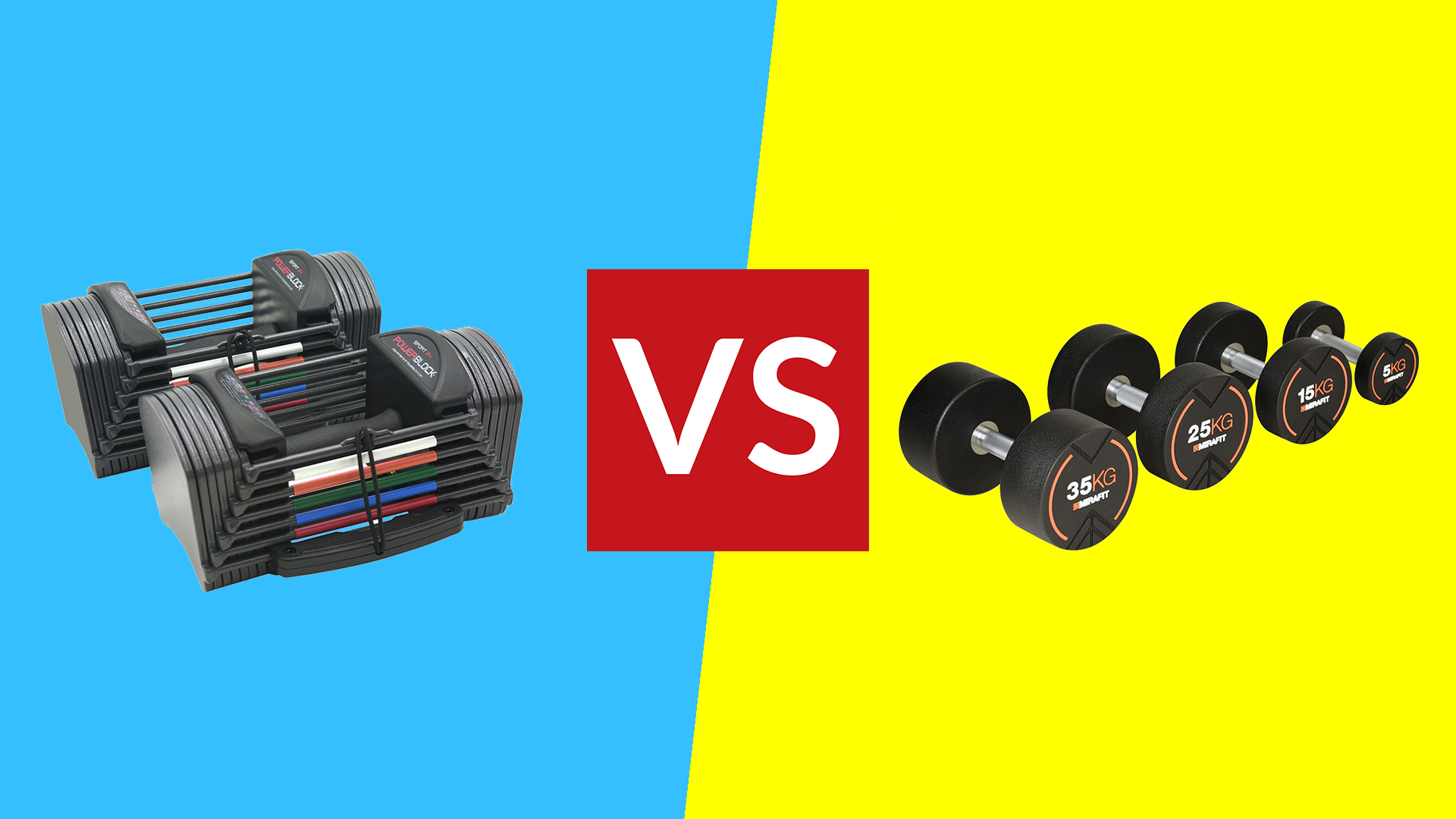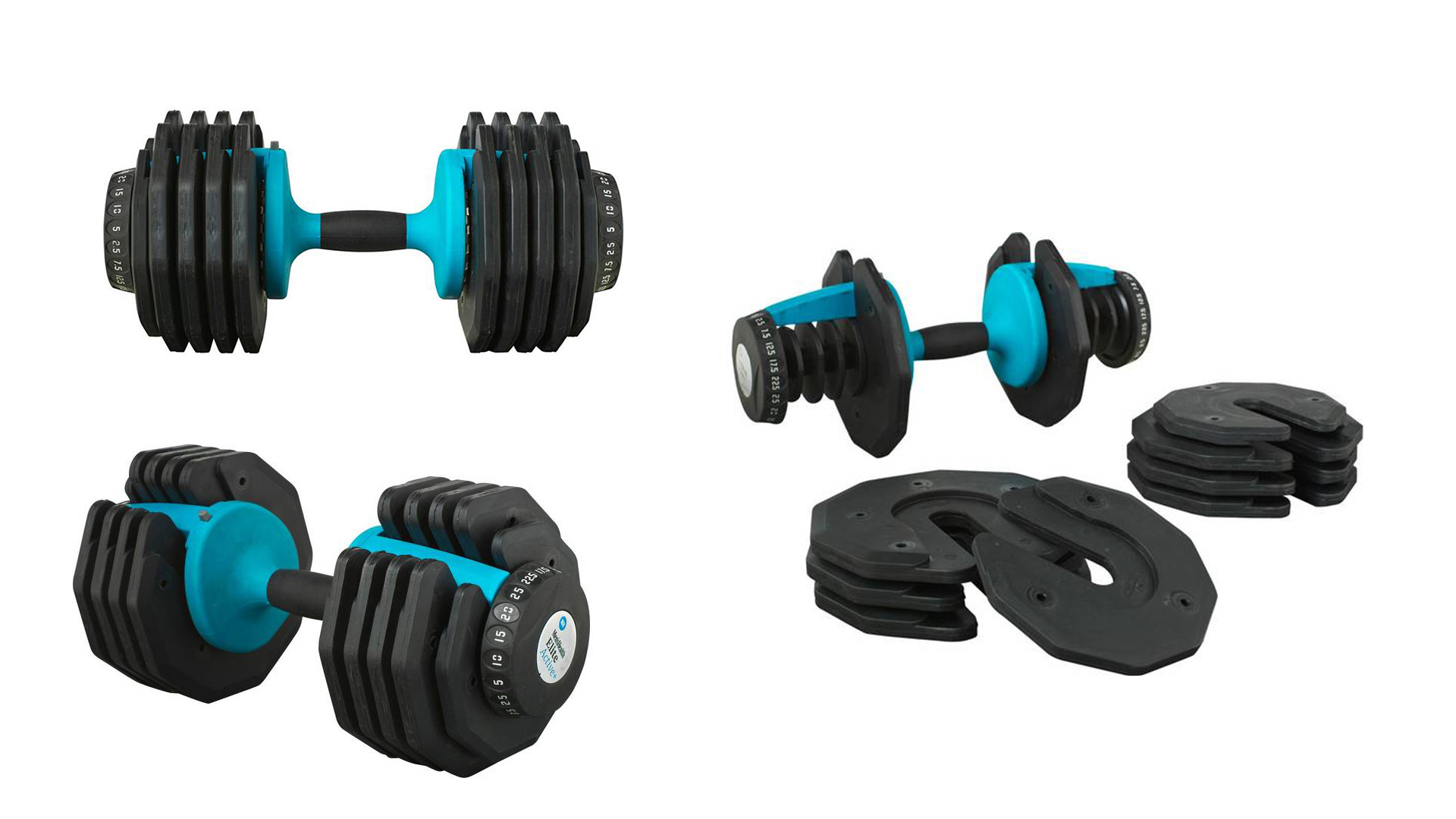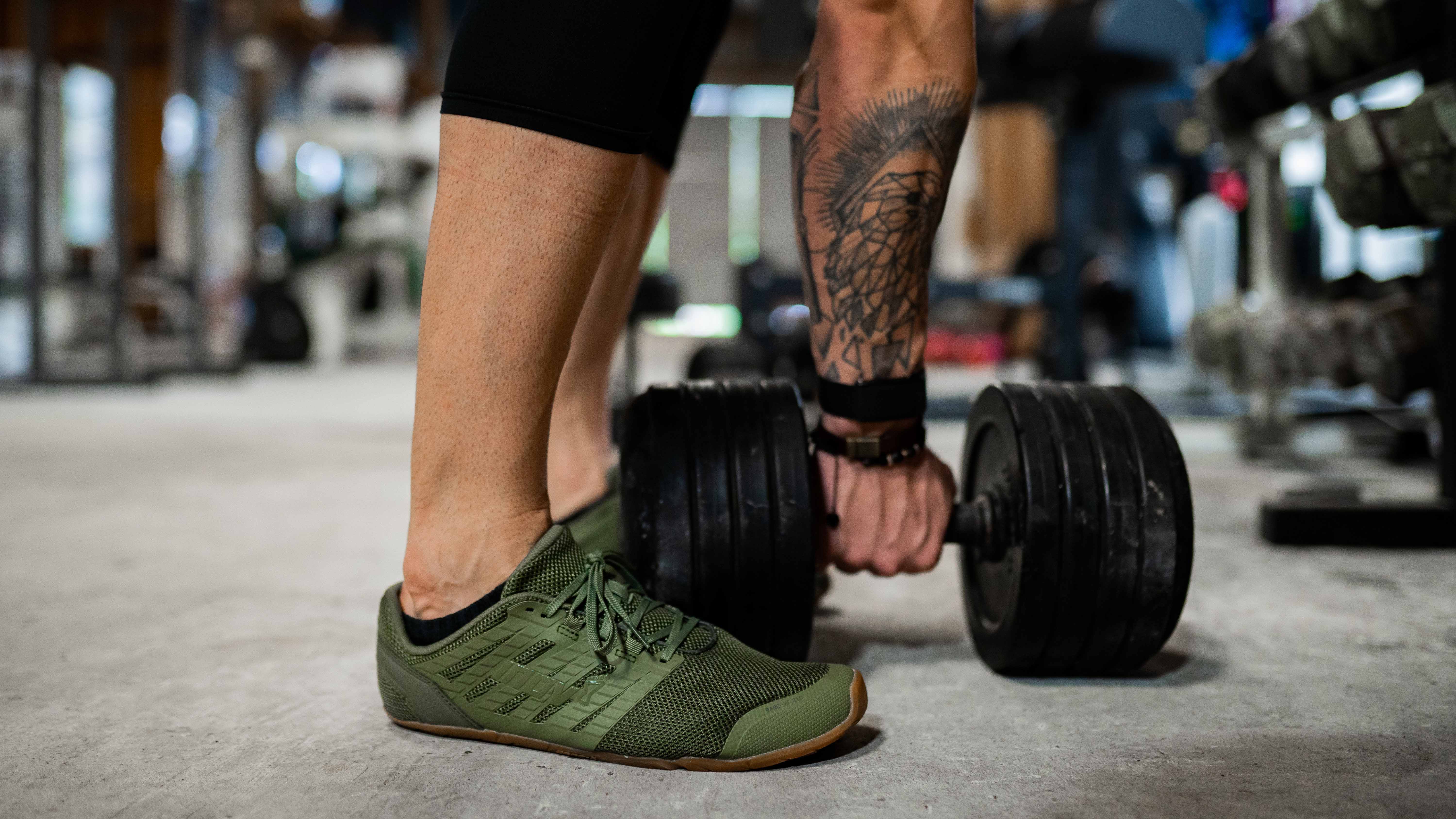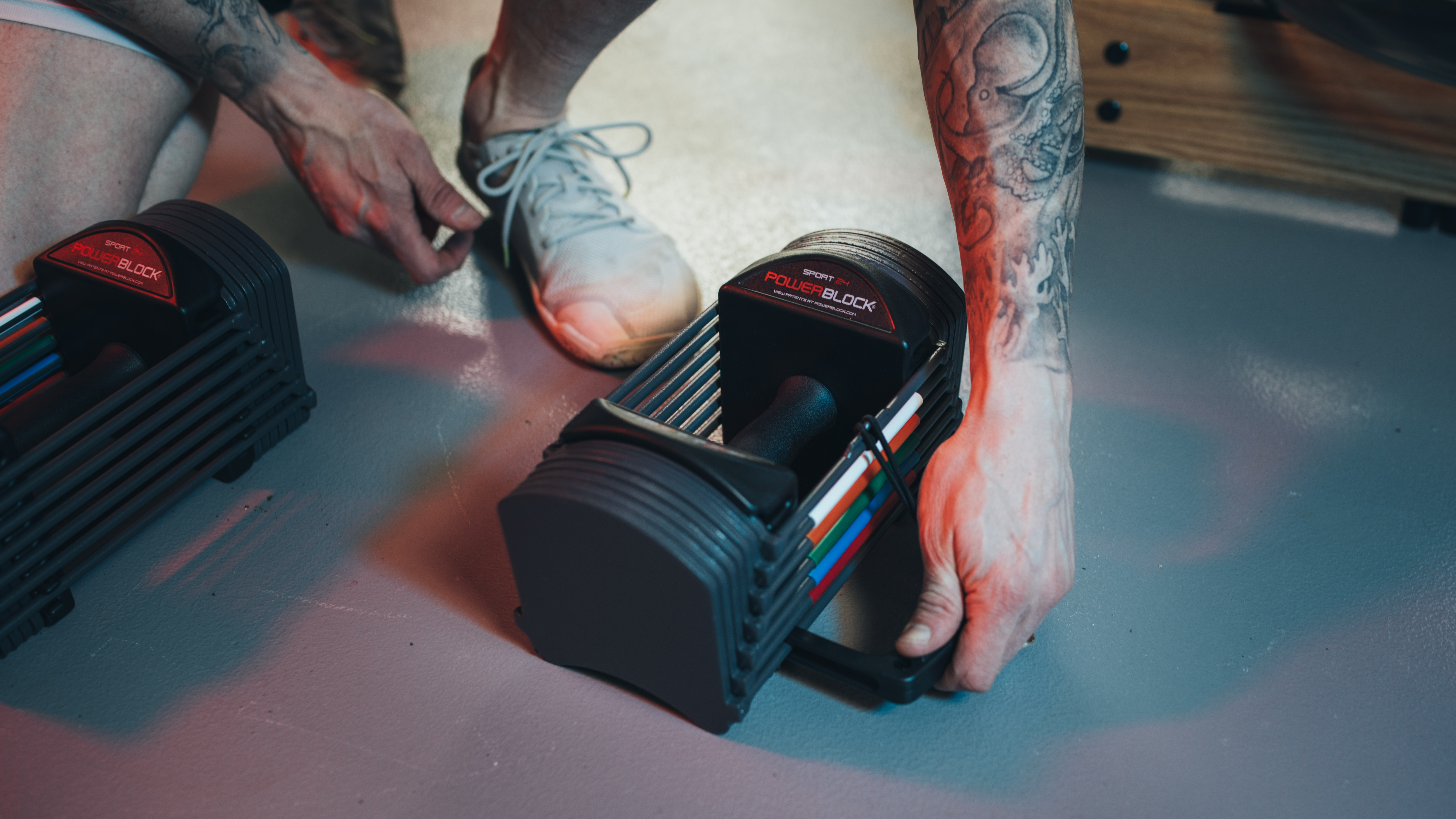

Adjustable dumbbells vs fixed dumbbells: should you go for a space-saving, high-tech product, or two lumps of metal with a handle in between? We have the answers for you here…
Adding a set of dumbbells to your home workout space, no matter how large or technologically advanced, is a surefire way of improving strength, increasing muscle tone and, when used in conjunction with high-intensity interval training techniques, torching excess fat.
But what’s the best type of dumbbell to go for? Is it the old-school fixed-weight dumbbell that you might see lining racks or sitting in a fancy tower at a local gym? Or is it better to invest in a set of adjustable dumbbells that neatly cram a selection of weights into one, space-saving unit?
Like so many things in life, there are pros and cons to both types and the final decision will chiefly come down to intended use, the amount of weight you require, available space and the sort of dosh you have to splurge.
For more information on both types of home weights, check out T3's dedicated buying guides, including the best dumbbells (our master home weights guide) and the best adjustable dumbbells for the modern variety.
Adjustable dumbbells vs fixed dumbbells: Price
Let’s get the sticky issue of cash out of the way because a modern adjustable dumbbell looks expensive on paper but actually represents great value for money when you consider the number of individual dumbbells they replace.
An average rack of 1kg to 10kg dumbbells will set you back between £450 and £600, depending on the brand, and many will find that they out-grow 10kg as the fitness regime progresses. Big movements, such as the chest press, squat and overhead press soon get rather easy with light weights.
Sign up to the T3 newsletter for smarter living straight to your inbox
Get all the latest news, reviews, deals and buying guides on gorgeous tech, home and active products from the T3 experts
The Powerblock Sport 2.4 adjustable dumbbell we tested replaces 8 sets of traditional fixed dumbbells and covers 1.5kg to 11kg in 2.25kg increments. These cost £199.99 for the pair, which feels like great value for money. That said, if you just need a little bit of extra weight to accompany a spin class or online fitness session, it’s possible to pick up a pair of light, 2.5kg fixed dumbbells for around £20.
Naturally, the heavier the adjustable dumbbell, the greater the cost, and the heaviest Bowflex numbers can tickle the £1,000 mark for a pair… if you can find some, that is.

Adjustable dumbbells have many parts, unlike fixed dumbbells
Adjustable dumbbells vs fixed dumbbells: What are they?
Fixed
In its simplest form, a fixed dumbbell is anything with a handle and two lumps of weight at either end. Most commonly, these are made from plastic or solid rubber and usually have some kind of rubber coating on the outside to protect them when dropped.
The very cheapest dumbbells will be made from plastic with either sand, concrete or water inside to create the mass. We’d suggest avoiding these, as they are very basic and very prone to cracking and generally falling apart.
Also worth considering is the shape of a fixed dumbbell, which usually comes with either circular end plates or those with a hexagonal or square design. The latter are generally more versatile, as they can be placed on the floor and used as press-up aids or when performing renegade rows without the worry of them rolling away.
Adjustable
Back in the day, an adjustable dumbbell consisted of a handle and individual weight plates that could be loaded by removing a spin collar and swapping them out - a bit like you would with a larger barbell.
Although easier to load with heavy weight plates and generally cheaper than more technologically advanced models, this type of adjustable dumbbell is fiddly, makes a lot of noise and doesn’t allow for quick weight selection mid-workout.
Modern systems, like those from Bowflex or PowerBlock, use a mechanism that allows for rapid weight selection via a removable pin or a rotating dial. These tend to be more expensive, as they replace a large spread of weights in one unit, but are excellent for saving space and time.

Adjustable dumbbells vs fixed dumbbells: Weight spread
For those looking to max out a dumbbell bench press or build arms like Chris Hemsworth, you’ll typically require a heavy weight and in this case, nothing can replace a fixed dumbbell. Available in everything from 2.5kg (sometimes less) to a whopping 50+kg per dumbbell, these bulky units are the only serious consideration for serious weight lifters. They are expensive, but can be dropped and generally thrown around without too many worries.
That said, there are adjustable spin-lock systems out there that go fairly heavy but it is rare and they become overly bulky when you start loading multiple metal plates onto the stubby handles. On top of this, they are noisy and, in my experience, the spin collars a far from reliable and have a tendency to work loose. So let’s just ignore those from here on in, shall we?
Modern “quick-look” adjustable systems are much better in this respect but are limited to the weight they can pack. The heaviest we’ve tested are the Bowflex Selecttech 1090i adjustable dumbbells, which feature a mighty fine weight spread of 4-41kg per dumbbell.
More commonly, these adjustable systems max out at around 25kg per dumbbell, but one thing to keep in mind is that they are sometimes sold individual and who wants just one dumbbell?

Adjustable dumbbells vs fixed dumbbells: Workout performance
The key differences between fixed and adjustable dumbbells are the way they perform and the most natural and versatile workout is going to come from a good set of traditional fixed dumbbells.
When specified with a hex rubber body, they make an excellent workout partner and can be used for all manner of movements, from classic pressing to more specialist crush grip push-outs and goblet squats, where the user cradles the weight at the plate end with an underhand grip.
Anyone who has wandered into the gym when it is deathly quiet will also attest to the ease at which you can quickly swap weights at a quiet rack, with the ability to work your way in 5kg or 2.5kg increments from 50kg (or sometimes more) down to just 2.5kg. As drop-sets go, nothing will beat this.
That said, a modern adjustable dumbbell can almost compete when it comes to speedy weight swaps, with something like the Bowflex 1090i merely requiring a spin of a dial at the end of the dumbbell or in the Powerblock’s case, removing of a plastic pin and reinserting it to the desired weight.
Bear in mind that the more traditional-looking adjustable dumbbells (Bowflex and Men’s Health) use a plastic tray that keeps the spare weight plates in check when not in use. I’ve mentioned it in my various reviews, but it can get annoying shifting this tray around and ever more vexing when the spare weight plates fall from their position in the tray mid workout.
JaxJox, makers of the connected kettlebell, also offer a digital dumbbell set that uses a similar tray system to the likes of Bowflex and Men’s Health, but uses a digital selection process that means weight can be swapped by pressing a button.
Finally, these “quick-lock” adjustable systems take some getting used to, especially if you are well versed in the traditional fixed dumbbell. They tend to be quite bulky and the balance feels a little off at first, especially where the Powerblock is involved. You also won’t be able to use multiple grip styles.
Adjustable dumbbells vs fixed dumbbells: verdict
There are many pros and cons to both the fixed dumbbell and their adjustable counterparts, but for those who carry out a variety of workouts at home, including a mix of strength training and cardio-based HIIT sessions, the adjustable dumbbell is invaluable.
It offers a great spread of weight in a compact shell that can easily be tucked in the corner of a room or stashed in the bottom of a wardrobe when not in use. The general design might feel a little alien to seasons gym-goers and the versatility of use can’t quite match a traditional fixed dumbbell, but where value for money and convenience is concerned, adjustable dumbbells are heard to beat when it comes to the home gym.
Leon has been writing about automotive and consumer tech for longer than he cares to divulge. When he’s not testing the latest fitness wearable and action camera, he’s out in a shed fawning over his motorcycles or trying not to kill himself on a mountain bike/surfboard/other extreme thing. He's also a man who knows his tools, and he's provided much of T3's drills coverage over the years, all without injuring himself.
-
 I tested every new Tudor at Watches and Wonders – my favourite caught me by surprise
I tested every new Tudor at Watches and Wonders – my favourite caught me by surpriseThe Rolex sister brand had a lot to offer
By Sam Cross Published
-
 Warning: Ciele’s refreshed Elite Collection may cause excessive garment envy on race day
Warning: Ciele’s refreshed Elite Collection may cause excessive garment envy on race dayFlex on your run crew with Ciele’s latest drop
By Matt Kollat Published